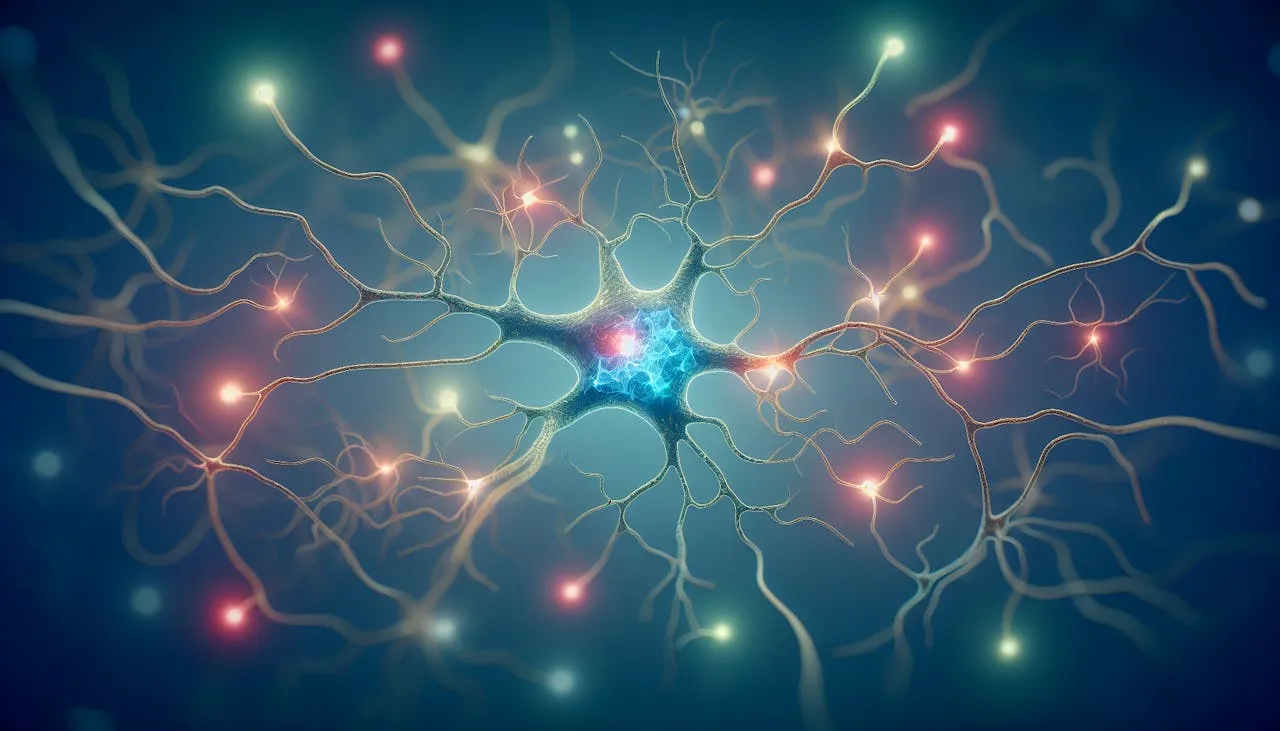Exploring the Nervous System Connection
Unraveling the Connection Between Autism and the Nervous System. Explore the Neurodevelopmental Factors and Treatment Approaches.

Understanding Autism Spectrum Disorder
Autism Spectrum Disorder (ASD) is a developmental disability that presents significant challenges in social interaction, communication, and behavior. While the exact cause of ASD is still unknown, it is believed to result from a combination of genetic and environmental factors that influence brain development.
What is Autism Spectrum Disorder?
Autism Spectrum Disorder is a complex neurodevelopmental disorder that affects individuals in varying ways. It is referred to as a "spectrum" disorder because there is a wide range of symptoms and severity levels observed among those diagnosed with ASD. Some individuals may experience mild difficulties, while others may face more significant challenges in social interactions, communication, and repetitive behaviors.

Prevalence and Diagnosis of Autism Spectrum Disorder
The signs of autism typically become noticeable by the age of 2 or 3, although some children may exhibit symptoms as early as 12 to 18 months. It is important to note that autism affects people of all races, ethnicities, and socioeconomic backgrounds. Research has shown an increase in the prevalence of autism, and it is now recognized to be more common among children born prematurely and among different racial and ethnic groups.
To diagnose ASD, healthcare professionals rely on a thorough assessment of an individual's behavior, communication, and developmental history. The diagnostic process may involve observations, interviews with caregivers, and evaluations conducted by specialists in the field of autism.
Neurodevelopmental Factors in Autism Spectrum Disorder
Neurodevelopmental factors play a significant role in Autism Spectrum Disorder. The brain undergoes complex development during early childhood, and disruptions in this process can contribute to the manifestation of ASD symptoms. Although the specific mechanisms are still being researched, it is believed that genetic and environmental factors influence brain development, leading to the characteristic social and behavioral challenges associated with autism.
Understanding autism spectrum disorder requires a comprehensive exploration of its various aspects, including its definition, prevalence, diagnosis, and neurodevelopmental factors. By gaining a deeper understanding of these key elements, we can better support individuals with ASD and promote inclusivity and acceptance in society.
Is Autism a Nervous System Disorder?
Autism Spectrum Disorder (ASD) is widely recognized as a neurodevelopmental disorder that stems from early developmental abnormalities in the nervous system. In this section, we will explore the link between autism and the nervous system, along with the abnormalities observed in the brains of individuals with autism. We will also discuss the role of neurotransmission and neuroinflammation in autism.
Exploring the Link between Autism and the Nervous System
Extensive research has uncovered several abnormalities in the nervous system that are associated with autism. These findings support the notion that autism is a disorder that affects the functioning and development of the nervous system. Studies have indicated that individuals with autism often exhibit changes in the size and organization of certain regions of the brain compared to neurotypical individuals.
Abnormalities in the Brain of Individuals with Autism
Neuroimaging studies have provided evidence of structural and functional abnormalities in the brains of individuals with autism. These studies have revealed differences in the size and organization of brain structures, as well as altered connectivity between different regions. Such abnormalities contribute to the unique cognitive and behavioral characteristics observed in individuals with autism.
Neurotransmission and Neuroinflammation in Autism
Neurotransmitter systems play a crucial role in the functioning of the nervous system. Research has shown that individuals with autism may have abnormalities in neurotransmission, including imbalances in the levels of certain neurotransmitters. These imbalances can affect communication between neurons and contribute to the atypical processing of information in the brain.
Furthermore, studies have also suggested a potential role of neuroinflammation in autism. Neuroinflammation refers to inflammation in the nervous system, which can result from immune dysregulation. Some researchers believe that neuroinflammation could contribute to the development and progression of autism, although further investigation is needed to fully understand this relationship.
By exploring the link between autism and the nervous system, as well as the observed abnormalities in the brains of individuals with autism, we gain insight into the underlying mechanisms of this complex disorder. Understanding these connections is crucial for advancing our knowledge and developing effective interventions for individuals with autism spectrum disorder.
Factors Influencing Autism Spectrum Disorder
Understanding the factors that contribute to Autism Spectrum Disorder (ASD) is crucial in unraveling the complexities of this condition. While the exact cause of ASD remains unknown, research suggests that a combination of genetic and environmental factors, as well as neurodevelopmental abnormalities, and neurological differences, play a role in its development.
Genetic and Environmental Factors
ASD has a complex etiology, with both genetic and environmental factors believed to contribute to its development. Studies have shown that there is a genetic component to autism, as it tends to run in families. However, it's important to note that no single gene has been identified as the primary cause of autism. Instead, researchers believe that multiple genes, interacting with environmental factors, contribute to the risk of developing ASD.
Environmental factors may also play a role in the development of autism. Research suggests that certain prenatal and perinatal factors, such as maternal exposure to certain medications, infections during pregnancy, or complications during birth, may increase the risk of ASD. Additionally, studies have shown that premature birth is associated with a higher prevalence of autism.
Neurodevelopmental Abnormalities in Autism
Autism is considered a neurodevelopmental disorder, meaning it arises from early developmental abnormalities in the nervous system. Neuroimaging studies have provided evidence of structural and functional abnormalities in the nervous system of individuals with autism, supporting the theory that autism is a nervous system disorder. Individuals with autism often exhibit changes in the size and organization of certain regions of the brain compared to neurotypical individuals. These differences in brain structure may contribute to the unique cognitive and behavioral characteristics observed in individuals with autism.
Neurological Differences in Autism and ADHD
Autism and Attention Deficit Hyperactivity Disorder (ADHD) share a connection through their relationship with the nervous system. Both conditions are neurodevelopmental disorders that affect the functioning of the brain. Furthermore, autism and ADHD often coexist in individuals due to shared genetic factors and underlying neural mechanisms.
Research suggests that the nervous systems of individuals with autism and ADHD process sensory information differently compared to neurotypical individuals. This can lead to challenges with sensory processing, attention, and emotional regulation in both disorders. Furthermore, differences in the functioning of the nervous system may contribute to the social and communication difficulties commonly observed in individuals with autism.
Understanding the interplay between genetic, environmental, and neurodevelopmental factors is essential in gaining insight into the complex nature of autism spectrum disorder. Ongoing research aims to further elucidate the intricate mechanisms at play, ultimately leading to enhanced understanding, early diagnosis, and improved interventions for individuals with ASD.
Treating Autism Spectrum Disorder
When it comes to treating autism spectrum disorder (ASD), early diagnosis and intervention play a crucial role in improving outcomes for individuals with ASD. The aim of treatment is to help individuals with ASD develop the necessary skills to lead fulfilling lives. Let's explore the various approaches to treating autism spectrum disorder.
Early Diagnosis and Intervention
Early diagnosis is essential for children with autism spectrum disorder. Early intervention services can help children develop communication and social skills, improve their behavior, and enhance their overall development. The evaluation process for autism typically includes interviews with parents and caregivers, developmental screenings, comprehensive diagnostic evaluations, and hearing and vision screenings. Healthcare professionals rely on observing behaviors and conducting comprehensive assessments to provide a diagnosis as there is no simple medical test for autism. Early diagnosis allows for timely access to appropriate support and therapies, which can significantly improve outcomes for individuals with autism.
Therapeutic Approaches for Autism
Therapeutic approaches are an integral part of treating autism spectrum disorder. Several therapies and interventions can help individuals with ASD develop necessary skills and manage their symptoms. Some commonly used therapeutic approaches include:
- Behavioral Therapy: Behavioral therapy, such as Applied Behavior Analysis (ABA), focuses on teaching and reinforcing positive behaviors while reducing challenging behaviors. This approach can help individuals with ASD improve communication, social interaction, and daily living skills.
- Speech Therapy: Speech therapy helps individuals with ASD improve their communication skills, including spoken language, nonverbal communication, and social communication. Speech therapists work on enhancing language comprehension, articulation, and pragmatic skills.
- Occupational Therapy: Occupational therapy aims to develop the fine motor, gross motor, and self-help skills of individuals with ASD. Occupational therapists focus on improving sensory integration, coordination, self-regulation, and activities of daily living [6].
- Medications: Medications may be prescribed by healthcare professionals to manage specific symptoms associated with autism, such as hyperactivity, anxiety, or depression. It's important to consult with a doctor to determine if medication is appropriate and to carefully monitor its effects.
Support and Management for Individuals with Autism
Support and management strategies are vital for individuals with autism spectrum disorder. Creating a supportive environment, providing educational and social support, and connecting families with community resources and services are key components of support and management for individuals with ASD. Support can include individualized education plans, social skills training, and counseling for both the individual with ASD and their family members. By providing a comprehensive support system, individuals with ASD can thrive and reach their full potential.
By focusing on early diagnosis, implementing therapeutic approaches, and providing ongoing support, individuals with autism spectrum disorder can enhance their quality of life and improve their overall well-being. It's important to work closely with healthcare professionals and specialists to develop an individualized treatment plan that addresses the unique needs of each person with ASD.
References
Does Your Child Have An Autism Diagnosis?
Learn More About How ABA Therapy Can Help
Find More Articles
Contact us
North Carolina, Nevada, Utah, Virginia
New Hampshire, Maine
Arizona, Colorado, Georgia, New Mexico, Oklahoma, Texas
.avif)




































































































